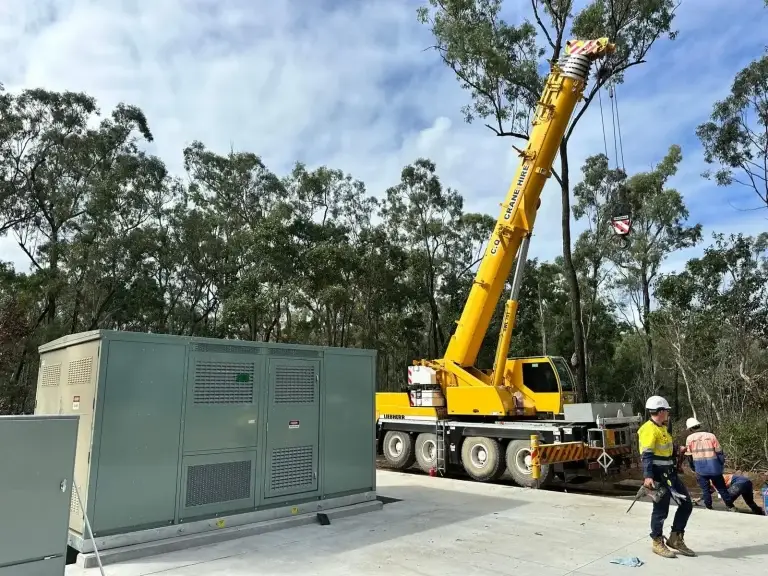High voltage is a critical component of modern electrical infrastructure. But what is high voltage, exactly? More than just a number, it represents a complex interplay between risk, efficiency, and compliance — especially in sectors like Defence, healthcare, government, and industrial operations where electrical systems must operate with precision and reliability.
This article provides a comprehensive look at what’s considered high voltage, why it’s essential in power transmission, the safety risks involved, and how it connects to specialised electrical services such as those provided by GAP Industries.
What is Considered High Voltage?
In general terms, high voltage refers to electrical potential large enough to cause harm or require specialised equipment. While definitions vary slightly by region:
- The International Electrotechnical Commission (IEC) defines high voltage as above 1,000 volts (V) AC or 1,500 V DC.
- In Australia, AS/NZS 3000 classifies anything over 1,000 V AC as high voltage.
These levels are common in electrical transmission systems, industrial machinery, and large-scale energy infrastructure where energy demands exceed the capabilities of low-voltage systems.

Why Are High Voltages Used in the Transmission of Electricity?
The main reason high voltages are used in transmission is to improve energy efficiency.
When electricity travels over long distances, energy is lost due to resistance in the conductors. By increasing the voltage and decreasing the current:
- Transmission losses are minimised.
- Smaller, more cost-effective conductors can be used.
- Power can be efficiently delivered over long distances.
In Australia’s national grid, it’s common to see transmission lines operating at 66kV, 132kV, or higher. These high voltages are later stepped down via substations before reaching commercial, industrial, or residential users.
Are High Voltage Power Lines Dangerous?
Yes — high voltage power lines can be dangerous if not handled or maintained correctly. Risks include:
- Electric shock or arc flash, even without direct contact.
- Neurological or cardiac damage due to exposure to strong electromagnetic fields.
- Structural risks if clearance distances aren’t maintained.
For these reasons, high voltage systems must comply with strict safety standards and be installed by qualified electrical professionals with proven experience in critical environments.
Industrial and Critical Applications of High Voltage
High voltage systems are essential across sectors that depend on consistent, high-load energy delivery. Common applications include:
- Defence sites with command centres and secure data operations.
- Hospitals, where high-powered diagnostic and surgical equipment operate 24/7.
- Industrial facilities such as processing plants, mining operations, and refineries.
In all these environments, electrical stability and compliance with regulatory standards are non-negotiable.
High Voltage in Hazardous Areas
Managing high voltage in hazardous environments—such as those with explosive gases, vapours, or dust—requires a specialised approach. These environments are classified as hazardous areas and demand strict controls to prevent ignition or equipment failure.
GAP Industries has extensive experience delivering safe and compliant solutions for electrical systems in such environments. This includes integrating high voltage installations within hazardous zones while adhering to Australian standards and safety codes.
For projects that involve both hazardous area classification and high voltage systems, GAP’s hazardous area electrical services offer the highest standard in risk mitigation, regulatory compliance, and system integrity.
Certifications and Standards for High Voltage Installations
Every high voltage project must follow certified procedures to ensure safety and long-term reliability. GAP Industries operates under:
- ISO 9001 certification, ensuring robust quality management across all projects.
- AS/NZS 3003:2018, particularly critical in healthcare and medical installations.
- AS/NZS 60079 series, applied to installations in hazardous locations involving explosive atmospheres.
These certifications demonstrate not only compliance, but a proactive commitment to safety, quality, and regulatory performance in high-risk environments.
Sectors That Rely on High Voltage Solutions
GAP Industries works across various sectors where high voltage is essential for daily operations:
- Defence: secure infrastructure requiring uninterrupted, regulated energy.
- Healthcare: hospitals with high-demand electrical systems and backup integration.
- Education: campuses and research centres with complex technical labs.
- Government: administration buildings and logistics hubs with advanced electrical requirements.
- Industrial and Commercial: large-scale operations demanding robust power distribution.
Each sector requires tailored solutions to meet both performance and compliance standards — GAP Industries delivers on both fronts with experience and precision.
Frequently Asked Questions About High Voltage
What is high voltage and how is it different from low voltage?
High voltage typically refers to levels above 1,000 V AC. It’s used for efficient transmission and distribution of electricity over long distances, while low voltage (below 1,000 V) is used for household and light commercial systems.
What is considered high voltage in Australia?
In Australia, under AS/NZS 3000, voltages above 1,000 volts AC or 1,500 volts DC are classified as high voltage.
Are high voltage power lines dangerous to the public?
Yes, high voltage lines can be extremely hazardous if proper safety distances are not maintained. However, they are safe when installed and managed by qualified professionals under compliant practices.
Why are high voltages used in the transmission of electricity?
Because increasing voltage reduces current, which in turn reduces energy loss. This allows electricity to be transmitted efficiently over large distances.
Can high voltage systems be installed in hazardous areas?
Yes — but only with the right certifications, risk assessments, and design standards in place. GAP Industries specialises in delivering safe, compliant high voltage solutions in classified hazardous environments.
Conclusion: Trust Experience and Compliance in High Voltage Projects
High voltage systems are essential to delivering reliable energy in demanding sectors — but only when designed and installed with precision, compliance, and technical understanding.
At GAP Industries, we bring years of experience managing high voltage infrastructure across defence, healthcare, government, and industrial projects. Our commitment to safety, compliance, and quality execution ensures your high voltage systems perform as expected — safely and without compromise.
Ready to power your next project with precision? Contact GAP Industries today to explore tailored high voltage solutions.